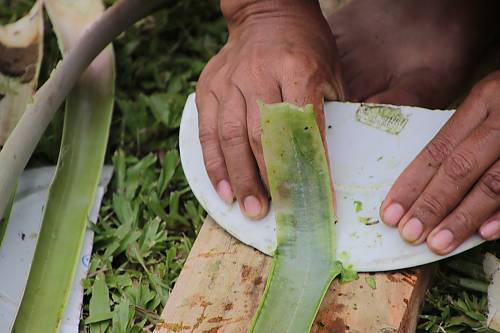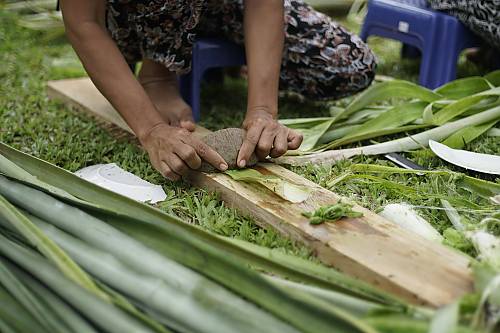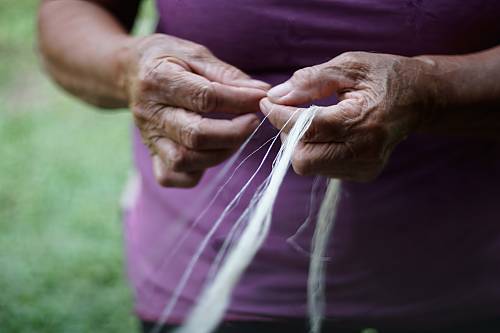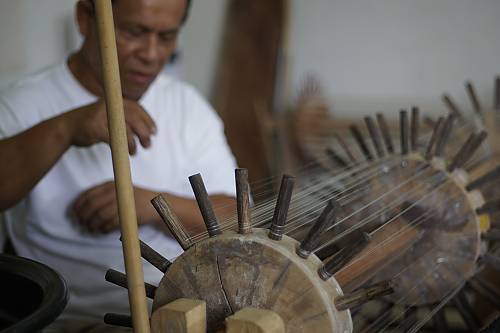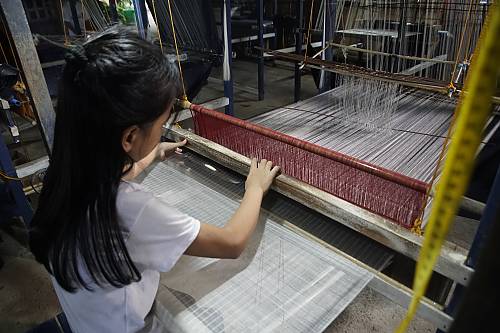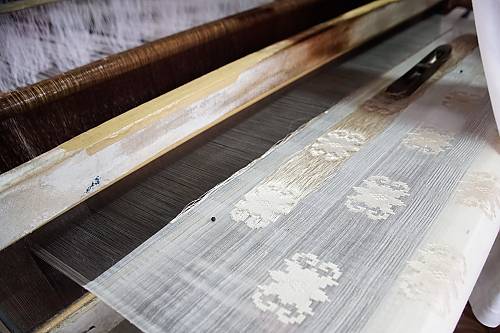Aklan piña handloom weaving
Inscribed in 2023 (18.COM) on the Representative List of the Intangible Cultural Heritage of Humanity
Piña is a textile made from pineapple leaf fibres and woven using a handloom. Farmers harvest the leaves of the pinya Bisaya, a specific pineapple species, and extract the fibres by hand. The fibres are weighed using a local unit of measurement and method involving old coins of different denominations. The knowledge and skills of piña handloom weaving are primarily passed on within families. Children grow up observing older family members engaged in pinya Bisaya cultivation and piña weaving, and eventually learn the craft under their guidance. The practice is also transmitted through the Schools of Living Traditions, which were initiated by local communities in partnership with the government to help safeguard intangible cultural heritage in the Philippines. Certain institutes provide trainings on related agricultural practices and weaving. A source of pride and a strong identity marker, the piña is the most highly regarded of the traditional textiles of the Philippines. It is the preferred textile for making formal attire and is a vehicle for innovation and creativity, as practitioners constantly develop new designs and patterns even as they preserve the old ones. It is also a source of livelihood that contributes to sustainable development and to the social and economic empowerment of families and local communities.


